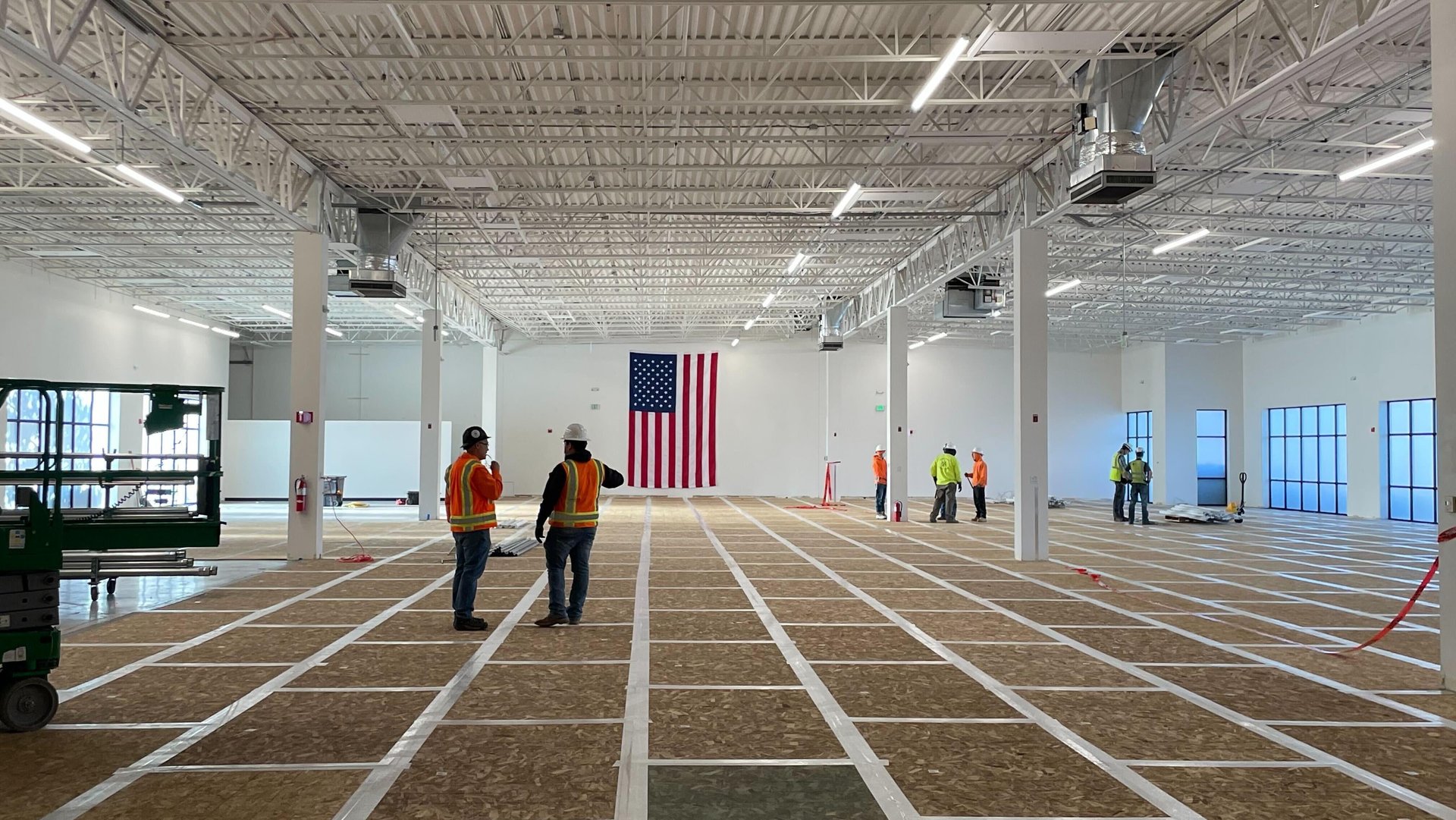True Anomaly wants to be the US Space Force's favorite contractor
The new satellite company wants to be Anduril, but for space

The US doesn’t have to worry about anti-satellite missiles demonstrated by Russia and China—it can just build and fly so many spacecraft that it doesn’t make sense for anyone to waste time shooting them down.
Suggested Reading
“It will cost more to shoot down a single satellite than it will cost to build that single satellite,” Derek Tournear, the head of the US Space Developent Agency, said at a space security conference on April 5. “We just completely changed that value equation.”
Related Content
That is, if industry steps up.
“Can we really build these satellites this quickly?” Tournear asked.
Yes, is the answer from Even Rogers, a former US Air Force officer who co-founded a new satellite-maker that announced its existence this week. True Anomaly, named for one of the six elements used to locate an object in orbit, aims to fuse military know-how with speedy engineering execution to meet the needs of the US military’s new approach to warfare in space. Rogers compares the firm to Anduril, the contractor founded to provide AI for national security applications.
True Anomaly says it has raised $30 million, hired 57 people, and opened a factory in Centennial, Colorado. It is developing software to help train service members at Space Command, where Rogers served during his military career; his four co-founders, Dan Brunski, Tom Nichols, and Kyle Zakrewski, were also Air Force officers focused on space. During their service, the military and indeed everyone else in space was forced to confront the major changes brought about by the falling cost of access to space, which has allowed both the US and its rivals to develop new capabilities far more cheaply.
That means the huge, multibillion-dollar spacecraft Rogers was charged with operating are on the way out, in favor of more resilient networks of smaller, cheaper satellites. Now, the Pentagon has to “prepare for a fight that has never happened before, [and] because we have never fought a conflict that extends into space, it can be very difficult to know what to go build,” Rogers says.
Building on his co-founders’ experience developing tactics for conflicts in space, Rogers describes a vision of “tacticians working with engineers and scientists and people who can go build things, production experts, to integrate all that stuff together and write the right algorithms.”
What kind of spacecraft does the US military need?
The company’s first hardware product is a pair of spacecraft scheduled to launch this autumn on a SpaceX Falcon 9 rideshare mission. The vehicles are designed to do “uncooperative proximity operations”—that is, maneuver close to other spacecraft that don’t necessarily want them nearby, in order to collect imagery of them. When Quartz spoke to Rogers, he referred to it as the Jackal Autonomous Orbital Pursuit Vehicle, but its official name drops the “pursuit.”
It’s a fascinating first step. Most of our data about spacecraft comes from self-reporting, radar, or signals intelligence. Telescopes can’t take detailed images of spacecraft, and most other satellites don’t bother—only recently did Maxar receive a license to do so and start sharing that imagery with customers.
Rogers stresses that “intelligence has always been a critical enabler of stability globally.” By examining other satellites, True Anomaly could determine if they carry weapons or have the ability to harm other spacecraft. The US Space Force says that Russian and Chinese satellites do have those capabilities—they can launch a high-speed projectile, and deploy a robotic grappling claw, respectively.
If the Space Force decides to purchase these spacecraft or their services, its criticism of rival inspector spacecraft may seem hollow. But Rogers says those operations were “unsafe and professional,” whereas the US is “committed to a establishing a rules-based order, operating in a way that’s safe and professional and consistent over time.” A natural comparison is to the kind of escorts that militaries often provide rivals in international airspace—which could be “routine” interactions or more haphazard encounters.
Can True Anomaly deliver the hardware?
The right ideas about what kind of tools the military needs aren’t any good if True Anomaly can’t do the hard job of building and operating spacecraft. One positive sign is that company, founded in March 2022, is planning to fly its first two spacecraft by the end of 2023.
But the technical challenge they have isn’t easy. Northrop Grumman is one of the few private companies that has built a spacecraft capable of autonomously approaching another object in space, inspecting it, and remaining in place nearby. Another, AstroScale, launched a pilot mission in 2021 that was able to snag a stationary target equipped with a magnetic plate, but not a tumbling one. The most advanced technology on NASA’s recent mission to the asteroid Dimorphos was the software that allowed it to target the space object autonomously.
Rogers is cognizant of the challenges—he coined the term “orbital engagement manuevers,” and spent both a stint at DARPA, the Pentagon’s technology development arm, and an internship at NASA working on these ideas.
True Anomaly is focused on ensuring there is enough computing power onboard the spacecraft to run software that can quickly react to feedback from its sensors, Rogers says. And unlike some other companies that aim to be the Department of Defense’s favorite satellite-maker while picking up business from academia or the private and civil space sectors, True Anomaly is betting on delivering right away for its target customer.
“We’re not trying to play the game of organic growth,” Rogers explains. Instead the goal is to “use private capital to do all the development and provide a complete solution.”
And Pentagon decision-makers may be ready to reward them. Tournear, the SDA chief, answers his own question about whether spacecraft could be built quickly enough: “We’re building up industry, so yes, we can.”
